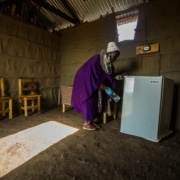The Power of Banks to Shape Climate Change Solutions
In this episode of the Breaking the Fever podcast, the first in our miniseries on climate finance, we speak with Ivan Frishberg, James Vaccaro, and Marilyn Waite about the banking sector and what it would take to scale its ambition and impact on helping to stem climate change.
We discuss:
- Incentives for banks to keep financing fossil fuels industry
- How banks can motivate their clients to improve climate performance
- The existential crisis the sector faces over the next decade
- Measuring the alignment of banks’ portfolios with climate goals
- How to get banks to say when they will divest from fossil fuels
- What shareholders and investors are doing to motivate banks to pursue climate goals
- How regulators enable long term harmful behavior such as the expansion of fossil fuel infrastructure
Ivan Frishberg is the Director of Impact Policy for Amalgamated Bank, the U.S.’s largest B Corp bank and a member of the Global Alliance for Banking on Values. Ivan leads Amalgamated’s impact efforts by spearheading and proactively engaging in strategic initiatives at the bank, such as carbon and climate commitments.
James Vaccaro is the director of Re:Pattern, which works to catalyze business transformation and business-model innovation in service of positive social impact. James is a strategist and systems thinker with a background in sustainable finance. He acts as a Special Advisor to Triodos Bank. As part of a former strategy role there, he designed and facilitated learning, development, strategy and innovation programs to accelerate progress in sustainability sectors across Europe.
Marilyn Waite is a Program Officer in Environment at the William and Flora Hewlett Foundation. Marilyn manages the foundation’s grant-making on climate and clean-energy finance with the ambitious goal of addressing climate change by accelerating the transition to a climate-friendly economy. Her grant-making mobilizes private capital investments in low-carbon and climate-friendly energy infrastructure and systems, seeking to redirect finance from high- to low-carbon activities and encourage wiser energy investments.









